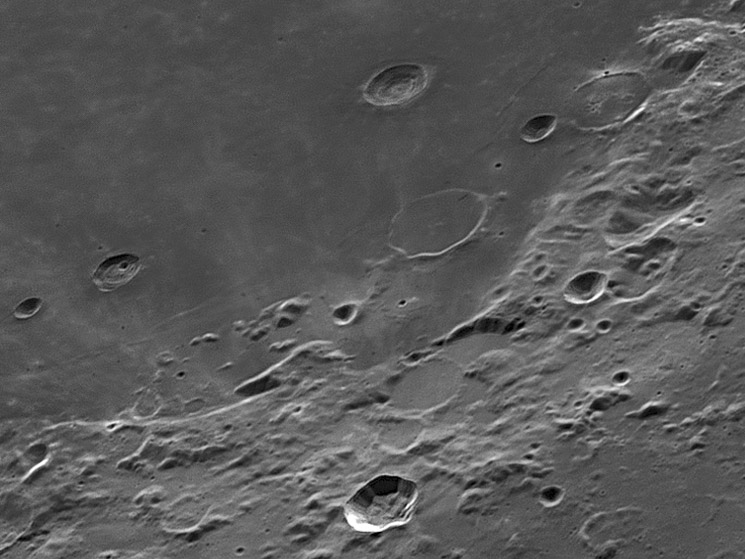May 19, 2013
Layers of Speculation
east up image by Damian Peach, Selsey, UK
In admiring Damian's wonderful recent imageof Crisium my imagination was piqued by Picard's (top-center) crater-within-crater appearance. This made me remember that the Apollo 17 Apollo Lunar Sounder Experiment (ALSE) detected a layer boundary at about 1.4 km depth below the surface of central Crisium. The interpretation was that this boundary was a regolith layer between major lower and higher lava flows. So I wondered if the place where Picard's walls seemed to deepen was associated with that boundary. LRO QuickMap provides high resolution topographic date to investigate. The average elevation of the mare near Picard is about -3700 below the average lunar radius. The layer boundary should be 1400 m below that, at -5100 m. The flat parts of Picard's floor are about -5250 m. So Picard's impact penetrated through the presumed lava flow boundary, and because impact melt and fallback reduced the depth, the original excavation depth was probably hundreds of meters below the current floor. This doesn't say that the crater-within-crater appearance is due to changes in impact mechanics when excavation passed from the top coherent lava flow to a weak regolith back to the coherent lower lava, but the topography is consistent with the layering having some effect.
Chuck Wood
Technical Details
April 16, 2013.
Related Links
Rükl plate 26
21st Century Atlas chart 2.
COMMENTS?
Click on this icon File:PostIcon.jpg at the upper right to post a comment.




